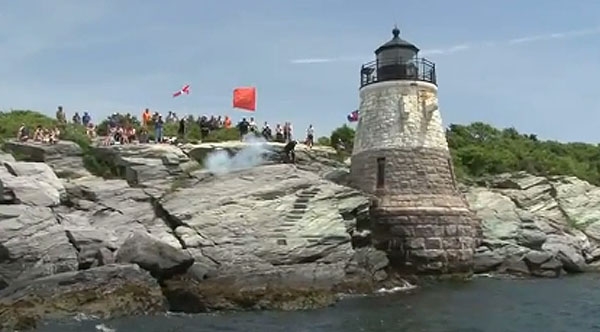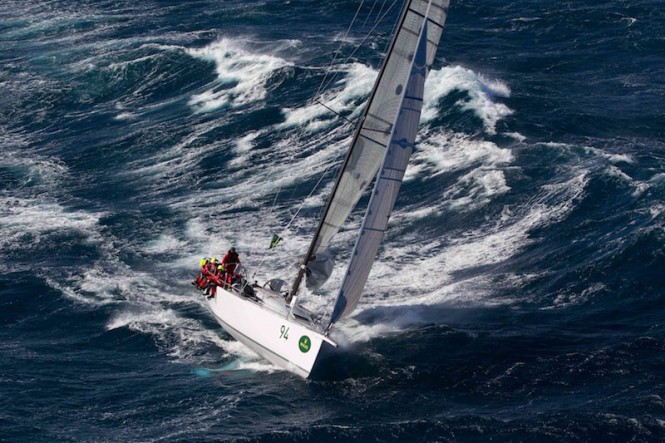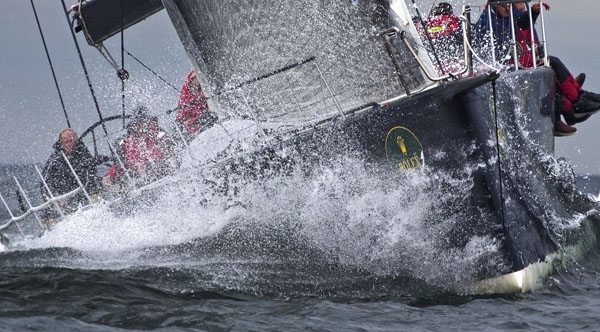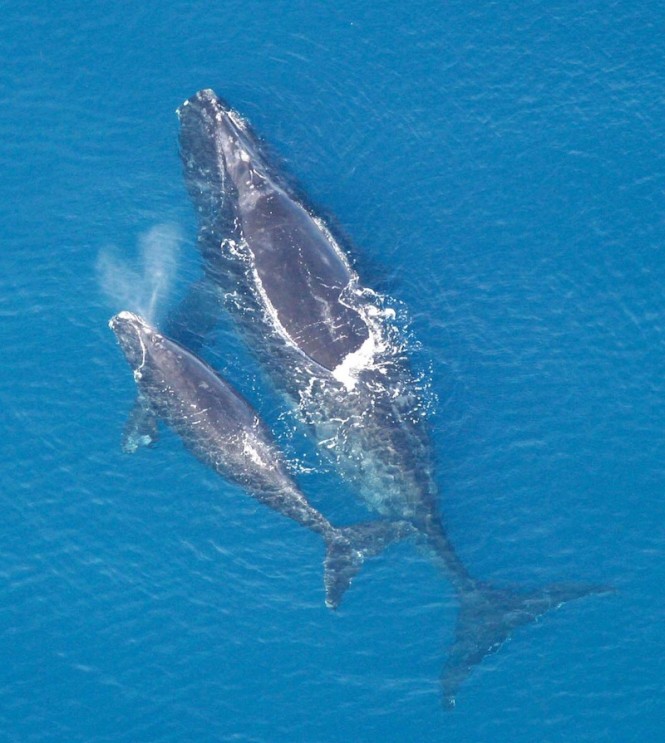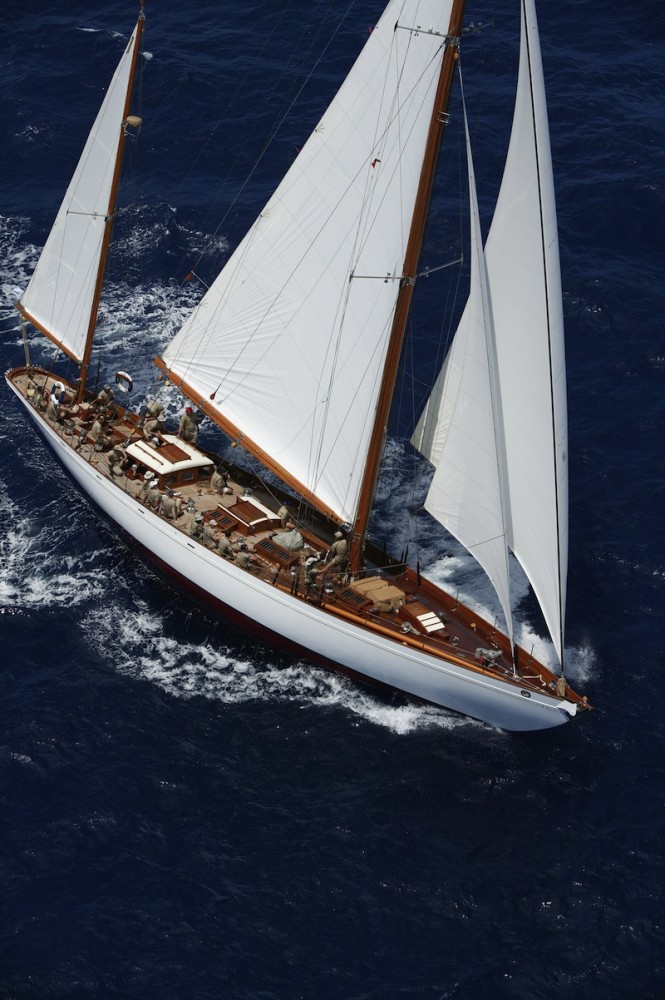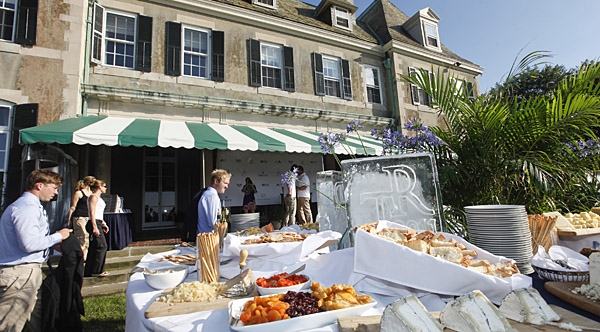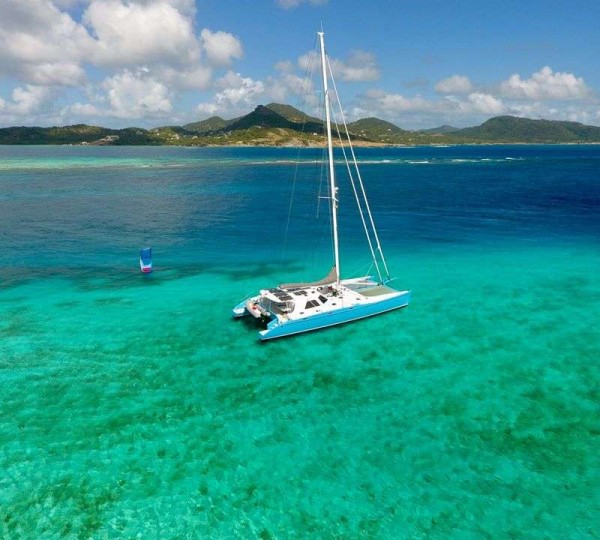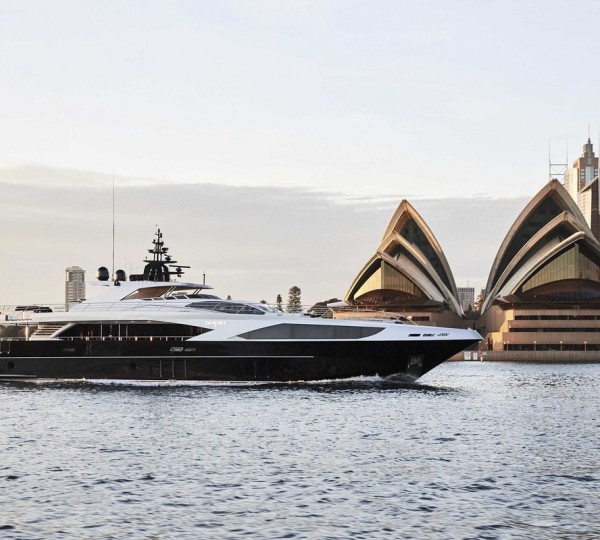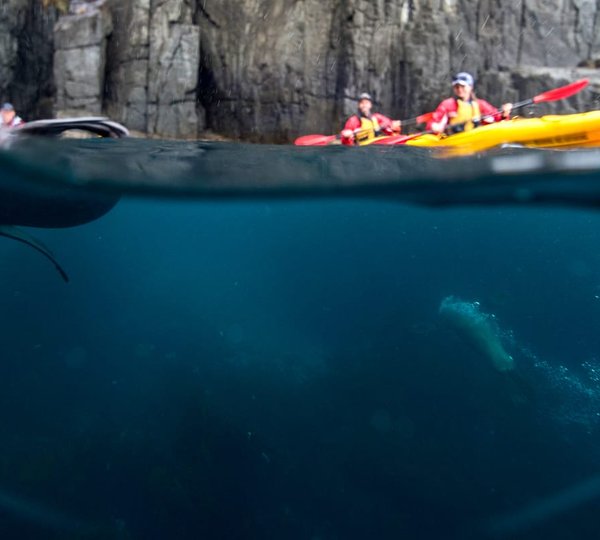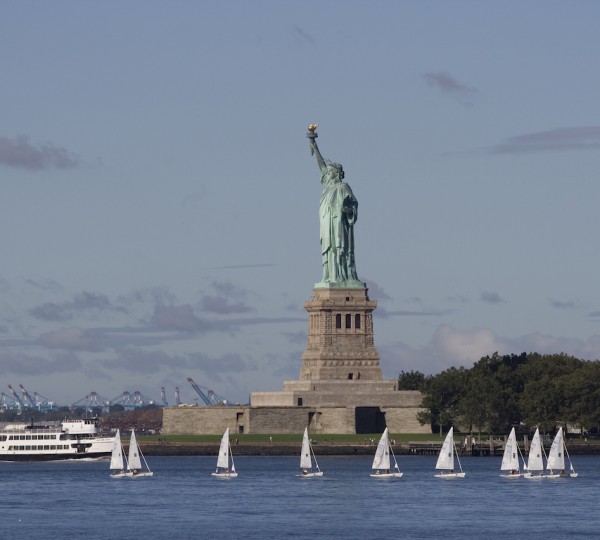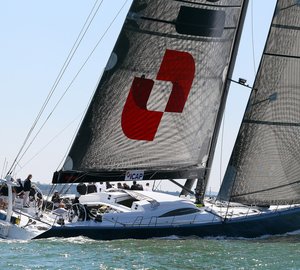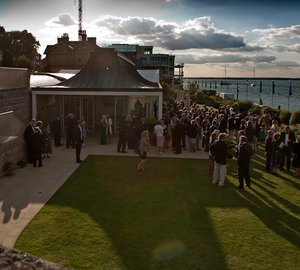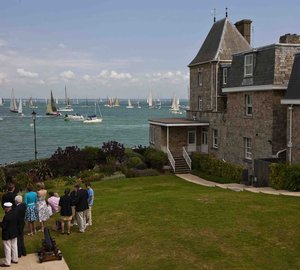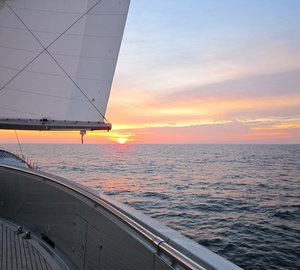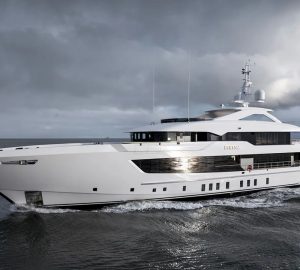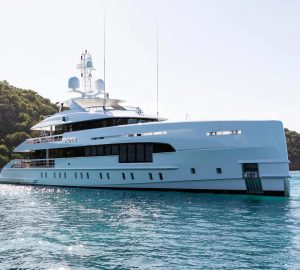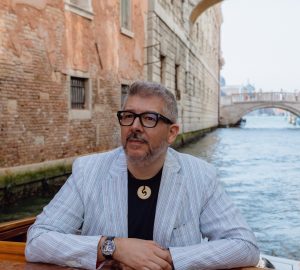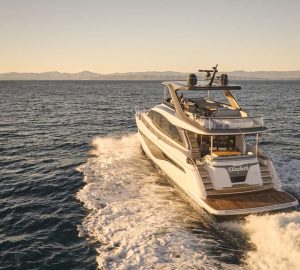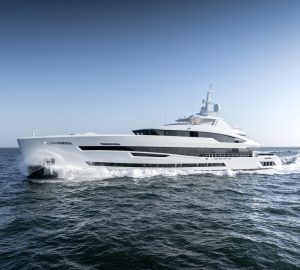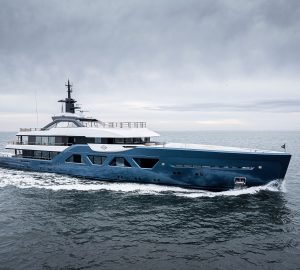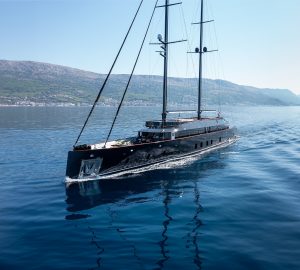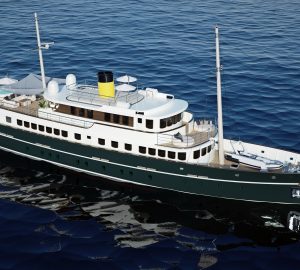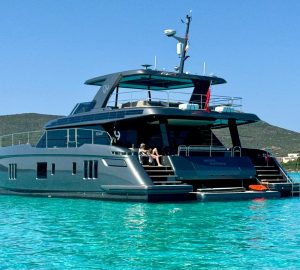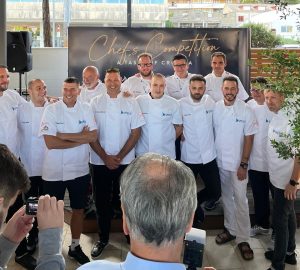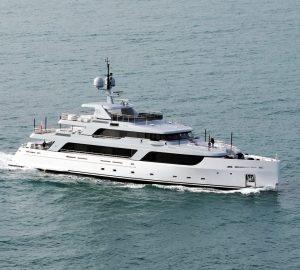Newport, R.I. USA – Having cheered on the first six yachts when they departed on the Transatlantic Race 2011 two days ago, the 14-strong group of yachts that will take the second of the three staggered starts now have less than 24 hours until they begin the race across the North Atlantic for themselves. The warning signal at 13:50 Eastern Daylight Time on Wednesday, June 29, will cue the largest group of yachts to depart, including the show-stopping Maltese Falcon, and spectators are guaranteed to see a unique sailing spectacle when the cannon is fired at Castle Hill Light.
Without doubt, tomorrow’s start will feature the most diverse battle of the race. The Open Class has just two yachts, but they are two of the showiest yachts in the race. Maltese Falcon, at 289’, is the largest yacht competing and is up against the only multihull entered in the race, Phaedo, the Gunboat 66 owned by Lloyd Thornburg (St. Barthelemy). The Lamborghini-orange catamaran and the futuristic Perini Navi will be a spectacular sight as they head off into the Atlantic.
In IRC Class Two, Jazz, a Cookson 50, has a star-studded crew including the highly experienced navigator, Mike Broughton (Hamble, U.K.), and skipper, Nigel King (Lymington, U.K.). Unfortunately, due to family commitments, owner Chris Bull is unable to make the trip. Two German teams on nearly identical yachts will also go head-to-head in the class: Christoph Avenarius and Gorm Gondesen’s Shakti and Jens Kellinghusen’s Varuna should virtually match race across the North Atlantic.
IRC Class Three will feature six yachts, including Snow Lion, the Ker 50 owned by former NYYC Commodore Lawrence Huntington (New York, N.Y.). Snow Lion is a proven winner, having won her class in the Newport Bermuda Race, and should be highly competitive on corrected time. There are, however, some real fliers in this class, not the least of which is Zaraffa, the Reichel Pugh 65 owned by Huntington Sheldon (Shelburne, Vt.), whose crew includes several veterans of the last edition of the Volvo Ocean Race. The Volvo 60 Ambersail, skippered by Simonas Steponavicius (Vilnius, Lithuania), is a much-travelled yacht having logged over 100,000 miles since being purchased in 2008 to celebrate a thousand years of Lithuanian history. After sailing around the world, Ambersail took part in the 2010 Sevenstar Round Britain and Ireland Race, winning class honors and placing second overall.
The youth entry from Germany, Norddeutsche Vermoegen Hamburg, will be helmed by Eike Holst whose third Transatlantic Race will be his first as skipper. And while the majority of the team aboard the Andrews 57 are university students in their 20s, two of the crew are just 18 years old. Many of sailors in the race were introduced to the sport as a family activity, which means the parents of these sailors, in particular, have a degree of understanding and ease with the undertaking at hand. That was not the case for Jerome Vigne, the Parisian-born mechanical engineering student who will have a very relieved mother welcoming him home to Germany.
Blending a comfortable interior with the performance of an Open 60 is Ourson Rapide, the Finot-Conq 60 owned by Paolo Roasenda (Vedano al Lambro, Italy). This is a special boat that should have a dream-like ride downwind. Scho-ka-kola, named for the German chocolate confection, is a Reichel Pugh 56 owned by Uwe Lebens (Hamburg) that has completed two previous Atlantic crossings.
Prodigy, a Simonis/Voog 54, is a proven winner. Owner Chris Frost (Durban, South Africa) took line honors in the 2011 Heineken Cape to Rio Race and will compete in the Rolex Fastnet Race, as well as the Rolex Middle Sea Race, as part of a year-long campaign. Of the 10 crew on Prodigy, two – including Aaron Gillespie (Butler, N.J.) and John Fryer (New York, N.Y.) – were recruited by Frost using the “Crew Finder” feature on the event’s website. It will be Gillespie’s first Transatlantic crossing.
The two smallest yachts in start two are both Class 40s: Dragon and Concise 2, the latter skippered by Ned Collier-Wakefield (Oxford, U.K.). Tony Lawson (Haslemere, Surrey, U.K.) assembled a crew of young aspiring sailors from Great Britain to make up Team Concise. The team has become a force to be reckoned with having won the 2009 Class 40 World Championship, set a world record for the Round Britain and Ireland course and taken class honors at the RORC Caribbean 600 for the last three years.
Dragon is the only boat racing across the Atlantic double-handed. Owner Michael Hennessy (Mystic, Conn.) has been an avid sailor ever since introduced to the sport by his father at the age of four on San Francisco Bay. Following college, Hennessy logged thousands of miles cruising along the New England coast before he started to focus on short-handed distance racing in 2002. Since then he has competed in four Newport Bermuda Races, as well as dozens of other races across New England. In 2008 he took notice of the fast growing Class 40 fleet and took delivery of his Owen Clarke-designed boat. In just two short years, Dragon has become a fixture on the ocean racing circuit. Joining Hennessy will be co-skippered Rob Windsor (East Northport, N.Y.) who grew up sailing with his family on Long Island Sound.
Sponsors of the TR 2011 are Rolex, Thomson Reuters, Newport Shipyard, Perini Navi and Peters & May, with additional support by apparel sponsor Atlantis Weathergear.
The First Six yachts:
After two nights at sea, Robert Foreman’s Hinkley 42, Jacqueline IV, leads on the water and after time correction. However, having completed over 50,000 miles of ocean sailing, the highly experienced owner, who hails from Bayshore, N.Y., knows that this is a marathon not a sprint.
One of the principle keys to success in the Transatlantic Race 2011 will be predicting the weather and reacting in the correct way to maximize that knowledge. The crew aboard Dawn Star blogged that light winds are expected today which may account for their move north of the rhumb line. The C&C 46, skippered by William Hubbard III and William Hubbard IV (both N.Y., N.Y.), may well be trying to get to the thermal wind activity that could be found off the coast of Maine and Nova Scotia. This move was not possible earlier in the race due to a “no-go” zone put in place by the race committee to protect the right whale feeding area.
With only 400 in existence, the North Atlantic right whales (Eubalaena glacialis, which means whale of the ice) are among the most endangered whales in the world and are protected under the U.S. Endangered Species Act. Vessel strikes and entanglement in fixed fishing gear are the two greatest threats to their recovery. The crew aboard the Army Sailing Association’s British Soldier reported spotting a glimpse of a whale in their blog. Hopefully there will be more sightings of these rare creatures.
Twenty-four hours after the first start of the Transatlantic Race 2011 and all six yachts are now into the open ocean and sailing off the breeze. The first night at sea was a calm affair, a gentle introduction to the North Atlantic where there was only a slight sea state as the breeze has continued to be light but from the north. With conditions fresher to the south, all six yachts are now below the rhumb line.
One hundred miles into the Atlantic, William N. Hubbard, owner of Dawn Star, sent an update from the racecourse by satellite link.
“To start our voyage off, a short ceremony was held in the cockpit and a tot of rum was poured over the side to toast Old Man Neptune, who we hope will speed us to the finish ahead of our competition. Weeks of preparation are now behind us and the only task at hand is to sail the boat as hard and as best as we can for the next few weeks.”
The 86’ classic Nordwind, owned by Hans Albrecht, made an early move south and is now 50 miles south of the rest of the pack and is cracking along on a beam reach using every inch of its waterline. Sailing a beautiful wooden boat in glorious sunshine, heading out to sea must be an exhilarating feeling. Tactically, Nordwind looks to be taking advantage of the Gulf Stream, the northern branch of which usually extends to 40º North, and Nordwind seems to have altered course to the east at that juncture. With peak velocities near six feet per second, the Gulf Stream is the fastest ocean current in the world. Multiply that by Nordwind’s waterline and the additional miles travelled to get there pale into insignificance.
Further north, Nick Bates’s British Soldier and Rives Potts’s Carina are already locked in a close duel. At around midday Eastern Daylight Time, Carina gybed north to take up a position to weather of British Soldier. It has been an excellent 24-hour run for the seven crew on Robert Foreman’s Jacqueline IV as well. For yesterday’s start, Foreman’s daughter, Kara, had the helm of the Hinckley 42. Built in 1996, Jacqueline IV is a proven ocean going competitor, completing the Newport Bermuda Race no less than 11 times.
Meanwhile, back on dry land, the Newport Shipyard has another magnificent resident. Peter Harrison’s 115’ Farr designed ketch, Sojana, arrived last night from Antigua. “It took us seven days and it was one of the easiest deliveries we have had,” said Sojana’s Captain Marc Fitzgerald. “No bad weather save a spectacular lightning storm on one night.”

